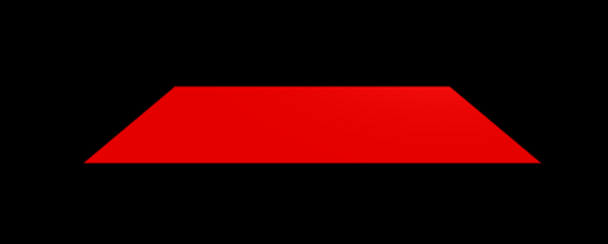VPython 2D shapes
VPython (Visual Python) is a 3D graphics library that allows us to create and visualize three-dimensional objects on the screen. It is primarily used to visualize the impact of physics equations on the objects' motion.
Note: Read more about VPython.
Shapes
VPython shapes are 2D objects extruded into the 3D space. 2D shapes can be defined by a vector
Following are some shapes in VPython:
Triangle
The syntax to make a triangle object is as follows:
shapes.triangle(pos, langth, thickness)
where parameters are:
pos: a two-dimensional position vector that defines the location of the shape. For example,pos=[-2,4].length: a positive value that defines the overall size of the triangle.thickness: a positive value that establishes a cavity inside the triangle.
For example:
Ngon
An ngon object creates a shape with provided
shapes.ngon(pos, np, length, thickness)
where parameters are:
pos: a two-dimensional position vector that defines the location of the shape. For example,pos=[-2,4].np: a positive integer that defines the number of sides.length: a positive value that defines the overall size of the ngon.thickness: a positive value that establishes a cavity inside the ngon.
For example:
Note: An ngon with
np=3is a triangle,np=4is a square,np=5is a pentagon and, so on.
Trapezoid
The syntax for creating a trapezoid is as follows:
shapes.trapezoid(pos, width, height, top)
where parameters are:
pos: a two-dimensional position vector that defines the location of the shape. For example,pos=[-2,4].width: a positive value that defines the width of the trapezoid's lower end.height: a positive value that sets the overall height of the trapezoid.top: a positive value that defines the width of the trapezoid's upper end.

pos=[0,0], width=5, height=1, top=3

pos=[0,0], width=5, height=1, top=7
Note: If
width=top, then trapezoid will become a cuboid.
Star
The syntax for creating a trapezoid is as follows:
shapes.star(n, radius, iradius)
where parameters are:
n: a positive integer that defines the star's number of corners.radius: a positive value that defines the outer radius of the star.iradius: a positive value that defines the inner radius of the star.

n=7, radius=8, iradius=9

n=7, radius=8, iradius=1
Code execusion
To execute the provided example code, follow the steps below:
Example code
The example code for the above shapes is as follows:
from vpython import *
t = shapes.triangle(pos=[3,3], length=3)
triangle_1 = extrusion(path=[vector(0,0,0),
vector (0,0,0.01)],
shape=t,
color=color.red)
n = shapes.ngon(pos=[-3,-3], np=7, length=2)
ngon_1 = extrusion(path=[vector(0,0,0),
vector (0,0,0.01)],
shape=n,
color=color.yellow)
z = shapes.trapezoid(pos=[3,-3], width=3, height=1, top=1)
trapezoid_1 = extrusion(path=[vector(0,0,0),
vector (0,0,0.01)],
shape=z,
color=color.cyan)
s = shapes.star(pos=[-3,3], n=7, radius=3)
star_1 = extrusion(path=[vector(0,0,0),
vector (0,0,0.01)],
shape=s,
color=color.blue)Note: Read more about
Free Resources